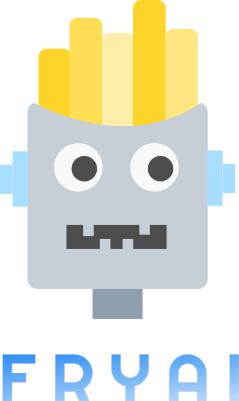- FryAI
- Posts
- Is Nvidia taking over the world?
Is Nvidia taking over the world?

The models are training. The fries are browning. And we’re locked in for another round of crispy AI takes. 🔐
🤯 MYSTERY AI LINK 🤯
(The mystery link can lead to ANYTHING AI-related: tools, memes, articles, videos, and more…)
Receive Honest News Today
Join over 4 million Americans who start their day with 1440 – your daily digest for unbiased, fact-centric news. From politics to sports, we cover it all by analyzing over 100 sources. Our concise, 5-minute read lands in your inbox each morning at no cost. Experience news without the noise; let 1440 help you make up your own mind. Sign up now and invite your friends and family to be part of the informed.
Today’s Menu
Appetizer: Nvidia takes over every GPU in the world 💾
Entrée: Nvidia to build massive supercomputer in Taiwan 🦾
Dessert: Will AI regulation be regulated? 🤨
🔨 AI TOOLS OF THE DAY
📸 ImageMate: Organize your photos with AI. → Check it out
👨💻 Tabs Magic: Manage your browser tabs in a way that makes sense. → Check it out
NVIDIA TAKES OVER EVERY GPU IN THE WORLD 💾
The Nvidia world takeover continues … 😅
What happened? Nvidia has unveiled “NVLink Fusion,” a new program that lets customers connect non-Nvidia CPUs and chips with Nvidia’s GPUs using its powerful NVLink technology.
How does this work? NVLink is Nvidia’s high-speed connection tech that allows different processors to share data quickly. Until now, it only worked with Nvidia’s own chips. But with NVLink Fusion, companies can mix and match Nvidia GPUs with third-party CPUs and specialized chips from other vendors, giving them more freedom to build custom AI systems. This means tech giants like Qualcomm or Fujitsu can combine their own hardware with Nvidia’s, creating flexible data center setups without being locked into Nvidia-only systems.
Why does this matter? This move helps Nvidia stay at the center of AI development, even as other companies build their own processors. By opening up its ecosystem, Nvidia can serve a wider range of customers and applications, keeping its GPUs in high demand—while giving developers more ways to optimize AI systems for specific tasks.
NVIDIA TO BUILD MASSIVE SUPERCOMPUTER IN TAIWAN 🦾
We’re not done talking about Nvidia yet! 🙃
What’s new? Nvidia is building a massive new AI supercomputer in Taiwan using over 10,000 of its latest Blackwell GPUs.
Want the details? The new system will be hosted at Taiwan’s National Center for High-Performance Computing and will be one of the most powerful AI supercomputers in the world. It will support key research institutions, Nvidia’s major partner TSMC, and national AI projects like TAIDE, which is creating language models specifically for Taiwan. The system will be more than eight times faster than Taiwan’s current top supercomputer and will power everything from healthcare tools to climate simulations. Nvidia also announced a new headquarters in Taipei and is partnering with Foxconn and the Taiwanese government to expand its presence.
“With the new supercomputer, the researchers will be able to run more complex simulations and accelerate the pace of AI training and inference.”
WILL AI REGULATION BE REGULATED? 🤨
In the world of AI, there is only one rule: there are no rules! 🤪
What happened? House officials have added a clause to their major tax bill that would block states from regulating AI for the next 10 years.
Want the details? The new clause would prevent any state or local government from passing laws that regulate AI systems, including tools like ChatGPT or AI used in hiring and housing decisions. The move is a big win for tech companies, which prefer federal rules that are lighter and consistent across the country. However, the clause faces a tough road in the Senate, where procedural rules may prevent it from being included in the final legislation.
Why is this significant? If passed, this would stop states from putting their own limits on AI—even though many have already started regulating deepfakes and algorithmic bias. Critics argue this could delay needed safeguards for public safety, privacy, and fairness while giving tech firms free rein to shape how AI is used. It also lends a lot of power to the federal government. However, supporters say this could enable consistent AI regulation nationwide, fostering increased development and simpler regulatory management. After all, AI is difficult to contain within each state.
“AI doesn’t understand state borders, so it is extraordinarily important for the federal government to be the one that sets interstate commerce. It’s in our Constitution. You can’t have a patchwork of 50 states.”
TWITTER (X) TUESDAY 🐦
🚨 BREAKING: OpenAI just added GitHub integration to ChatGPT’s deep research tool.
You can now ask ChatGPT to analyze real codebases, break down product specs, and summarize repos all in natural language.
Here’s how it works (and why it matters):
— Ryan Lazuka (@lazukars)
6:07 AM • May 17, 2025
Start learning AI in 2025
Keeping up with AI is hard – we get it!
That’s why over 1M professionals read Superhuman AI to stay ahead.
Get daily AI news, tools, and tutorials
Learn new AI skills you can use at work in 3 mins a day
Become 10X more productive
HAS AI REACHED SINGULARITY? CHECK OUT THE FRY METER BELOW:
What do ya think of this latest newsletter? |
Your feedback on these daily polls helps us keep the newsletter fresh—so keep it coming!






